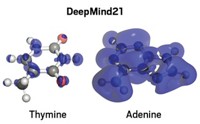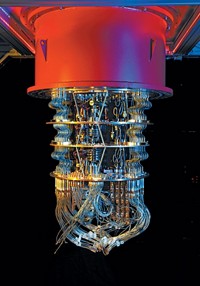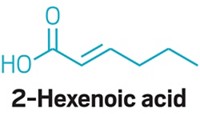Advertisement
Grab your lab coat. Let's get started
Welcome!
Welcome!
Create an account below to get 6 C&EN articles per month, receive newsletters and more - all free.
It seems this is your first time logging in online. Please enter the following information to continue.
As an ACS member you automatically get access to this site. All we need is few more details to create your reading experience.
Not you? Sign in with a different account.
Not you? Sign in with a different account.
ERROR 1
ERROR 1
ERROR 2
ERROR 2
ERROR 2
ERROR 2
ERROR 2
Password and Confirm password must match.
If you have an ACS member number, please enter it here so we can link this account to your membership. (optional)
ERROR 2
ACS values your privacy. By submitting your information, you are gaining access to C&EN and subscribing to our weekly newsletter. We use the information you provide to make your reading experience better, and we will never sell your data to third party members.
Computational Chemistry
Density functional theory error discovered
Free energy results can vary significantly with the computational method, but a simple fix reduces errors
by Sam Lemonick
July 29, 2019

Chemists use density functional theory (DFT) to accurately approximate the exact properties—like free energies—of molecules or materials in a reasonable amount of time. The method is widely used even outside of computational chemistry groups, often to back up or explain experimental results from the lab. But a new study suggests that some researchers, using standard settings for routine DFT computations, may be unknowingly introducing significant errors into their free-energy calculations (ChemRxiv 2019, DOI: 10.26434/chemrxiv.8864204.v4).
As a method that relies on approximations, DFT has a number of known errors and fixes for them. But Kendall N. Houk, a computational chemist at the University of California, Los Angeles, who was not involved in the new work, says, “This paper identifies a problem that many of us did not know about.”
Steven Wheeler of the University of Georgia and former group-member Andrea N. Bootsma, now a senior scientist at Pfizer, discovered the problem when Bootsma was testing an automated computer program that uses DFT to calculate transition-state energies as part of a screen for new catalysts. When she double-checked the computer’s calculations by hand, the results didn’t match. After rejecting other possible sources of error, she and Wheeler realized they had found a flaw inherent to DFT.
Bootsma and Wheeler found that DFT calculations of free energy can vary by as much as 5 kcal/mol depending on the orientation of the molecule, and these calculations shouldn’t depend on orientation, Wheeler says. Calculating free energy can be useful for predicting a reaction’s stereoselectivity or regioselectivity and a 5 kcal/mol error can mean the difference between producing one isomer versus another. Fortunately, the researchers also found that users can reduce these errors by choosing the right parameters for calculations.
The researchers determined that the errors are related to the size of the integration grid, which DFT algorithms use to divide up a molecule’s 3-D electron density into smaller, easier-to-handle densities to approximate the overall energy of the system. They say a (75,302) grid, which is a relatively coarse grid and is the default setting in some commonly used DFT programs, is insufficient. They recommend that users choose a finer grid, such as (99,590) at minimum.
Wheeler explains that the error is a result of how DFT handles molecules with low-frequency bending modes. In other words, floppy molecules. He and Bootsma used DFT to calculate the free energies of 2-butyne and several other molecules with low-frequency modes. They found free energy variances of up to 5 kcal/mol using the coarsest grids, while using finer grids reduced the differences to less than 1 kcal/mol in most cases.
Experts know that molecules with low-frequency modes can pose problems for DFT, but while DFT manuals may warn users that grid size can affect calculations on floppy molecules, “I’m not sure those warnings are always heeded,” says computational chemist John Herbert of the Ohio State University. Filipp Furche, a computational chemist at the University of California, Irvine, says users need to educate themselves about the methods they use, but he acknowledges that developers have a responsibility as well to educate users.
Chemists say they think these kinds of errors have probably made it into many papers. Daniel Singleton, an organic chemist at Texas A&M University, says since reading the preprint, he has recalculated some of his own results and found one instance in a published paper in which the free energy changed by more than 1 kcal/mol depending on its orientation, although he says the discrepancy doesn’t affect the paper’s conclusions (J. Am. Chem. Soc. 2015, DOI: 10.1021/ja5111392).
Singleton says, while many chemists may have published similar errors unknowingly, there’s also a possibility that some chemists re-ran their calculations using different settings until they got a free energy that agreed with their experimental results, even if they didn’t understand why the computed value changed. “Chemists don’t see themselves as subject to the same kinds of issues that other fields have seen, for example with the ‘replication crisis,’ but the bias of humans toward good results is universal,” Singleton says.
Bootsma wonders whether some researchers fell victim to this orientation problem and then abandoned a project because their computational and experimental results didn’t match.
She says the next step is for chemists to decide how best to address this issue, which is why she and Wheeler decided to publish this preprint. They wanted to raise awareness about the problem and start a conversation about how to handle it.
CORRECTION
This story was updated on Aug. 6, 2019, to clarify Daniel Singleton's comment. He thinks chemists may have used different settings, not different orientations, to find DFT results that agreed with experiment.





Join the conversation
Contact the reporter
Submit a Letter to the Editor for publication
Engage with us on Twitter